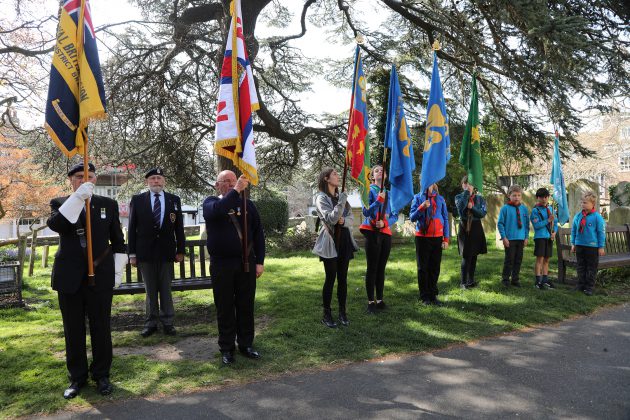RNLI Rye Harbour Lifeboat Station is now the proud owner of a special RNLI ceremonial standard because of the generosity of David and Jackie Rees, who wanted to donate the money for us to purchase it in the memory of Jackie’s late parents.
On Sunday, April 24 at the St George’s Day parade and service at St Mary’s, Steve Brown, Rye RNLI crew member, carried the new standard with pride. There was a great turn-out of our crew to witness the blessing of the standard in the church. The vicar the Reverend Paul White said, “Heavenly Father, we thank you for the work of the Royal National Lifeboat Institution and especially for the men and women based at Rye Harbour who give their all to save lives at sea. We thank you for the gift of this new standard and we pray for your blessing to be on it now.”
Dave Richards, RNLI Dungeness, explains the significance of the standard.
Every standard and every part of it tells a story:
The white on the flag represents purity of mind and spirit – all will be aided, regardless of who or what they are. The blue is the sky above us and the sea on which we sail. The red, the cross of St George, recalls the patron saint of warriors, not the ones who fight in wars and conflict but those who battle the seas. The gold is for remembrance, lest we forget those who have gone before. In the centre is the crown for the Queen, our royal patron. Below, the warp and anchor is the symbol of the merchant marine of which we are part, but more, the anchor shows strength and the warp the common bond which ties us together. The tassels are the beginning and end of life and the cord the path between the two with all its twists and turns, but when laid out it shows the straight and narrow path we should take. The fringe is the never-ending connection between those who have gone before those who are present now and those who will continue in the future.
We will bear our standard with pride and at Rye Harbour we shall continue to uphold the traditions of the RNLI.
Image Credits: Kt Bruce .






Thank you for that interesting article Kt particularly explaining the relevance of all the parts of the standard.
You live and learn, I didn’t know any of that but I’ve never heard of a warped anchor, I believe the correct term is a fouled anchor, a navy term representing the trial and tribulations of the service or wearer.
Obviously I stand to be corrected by those with a greater knowledge.